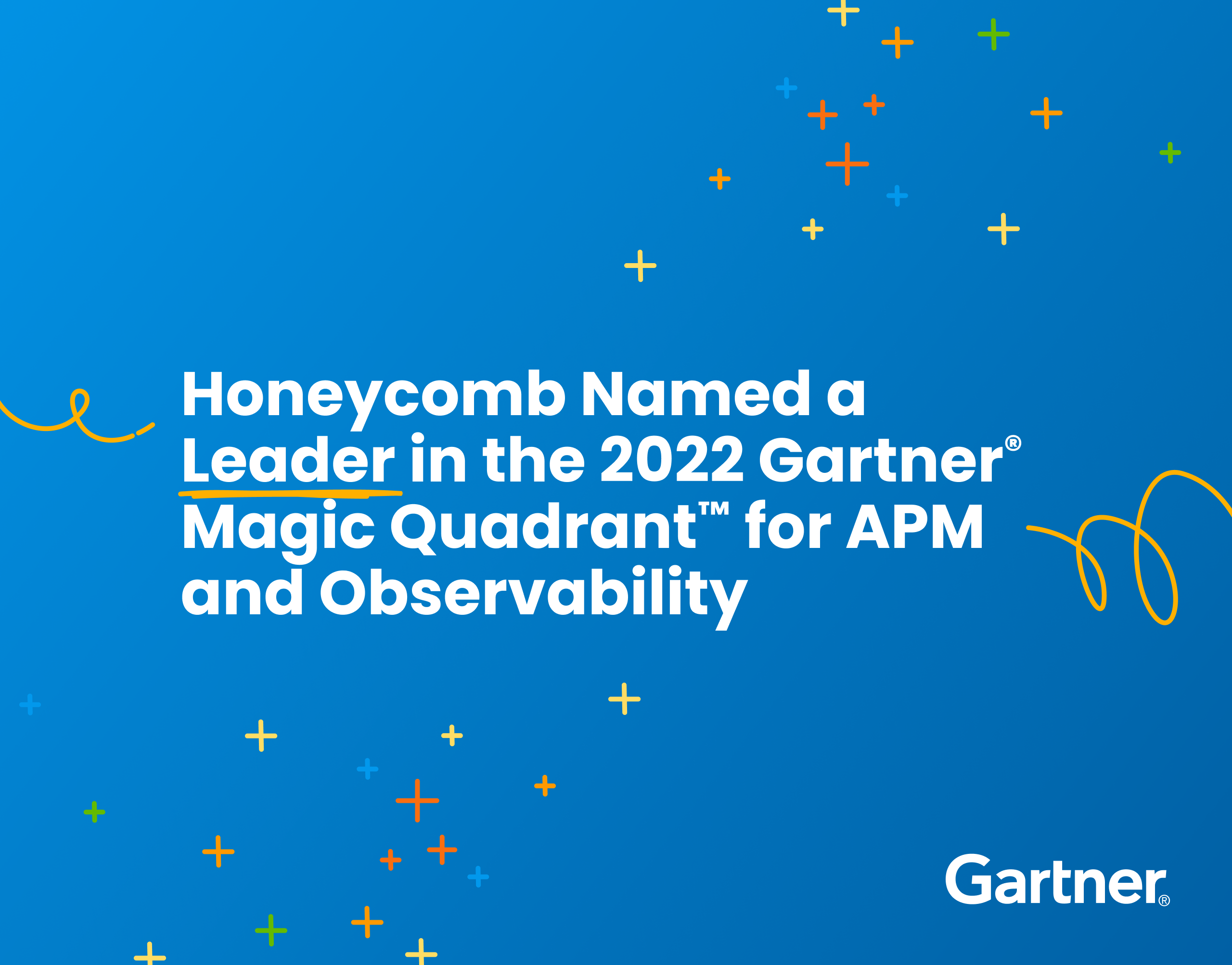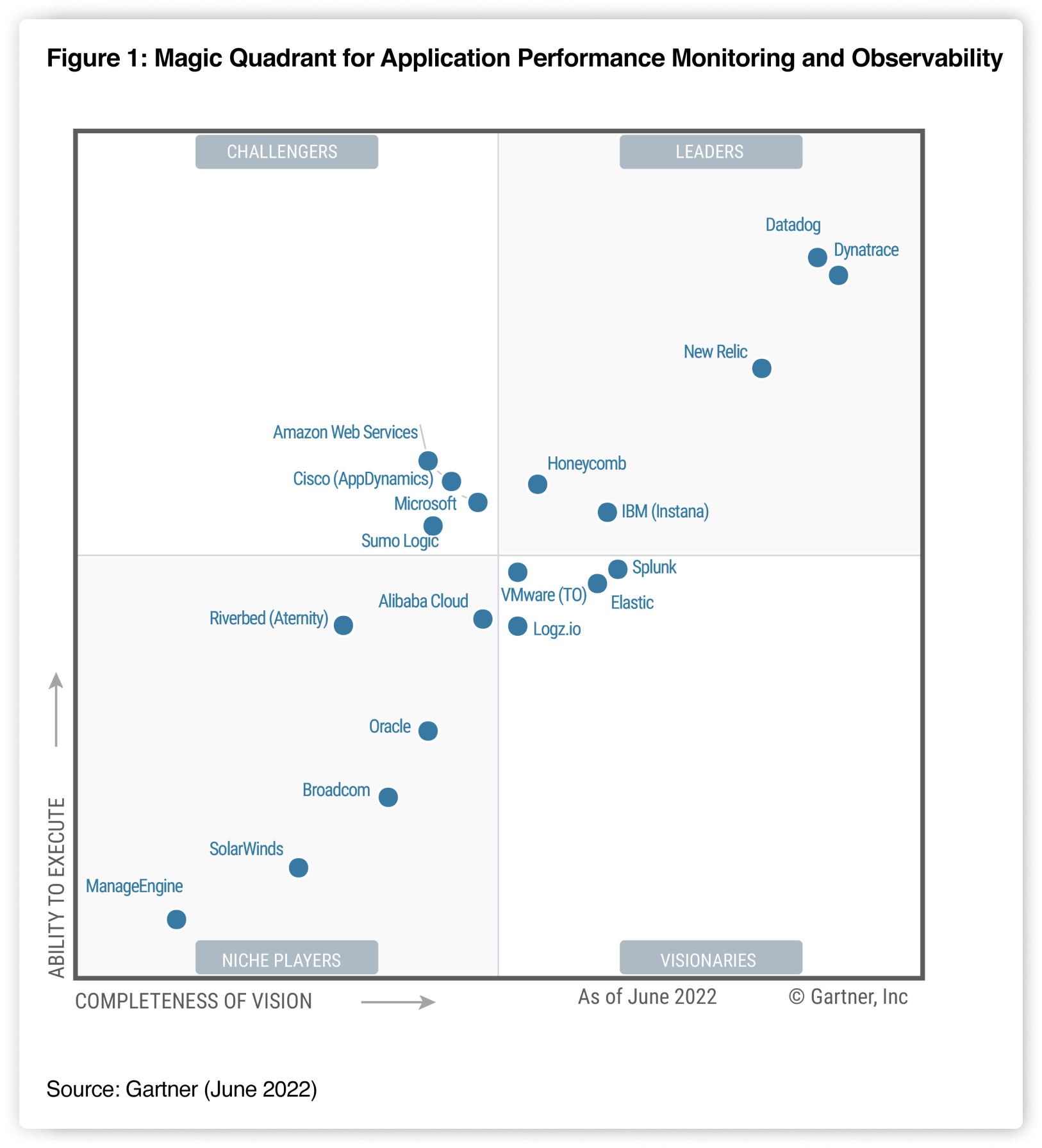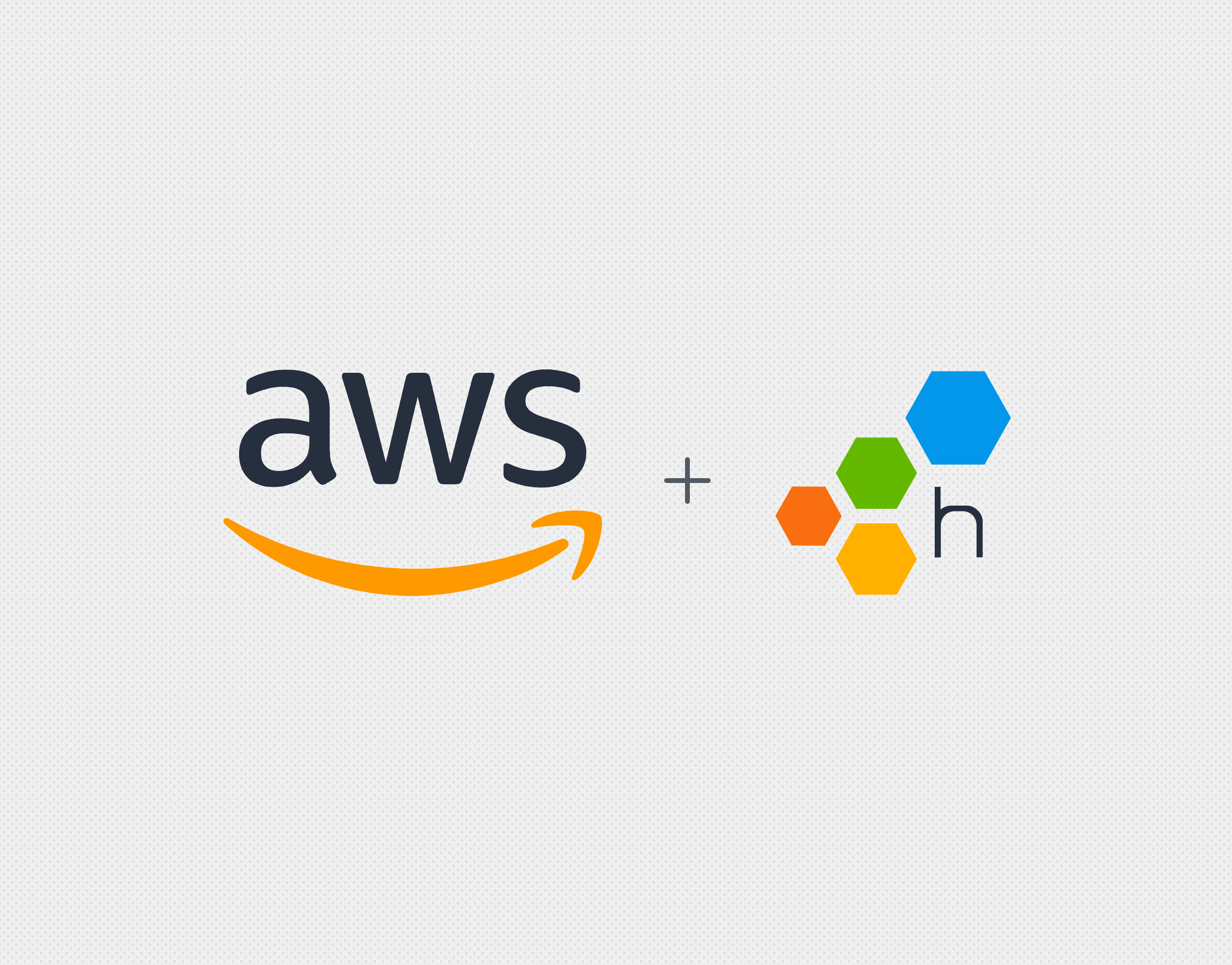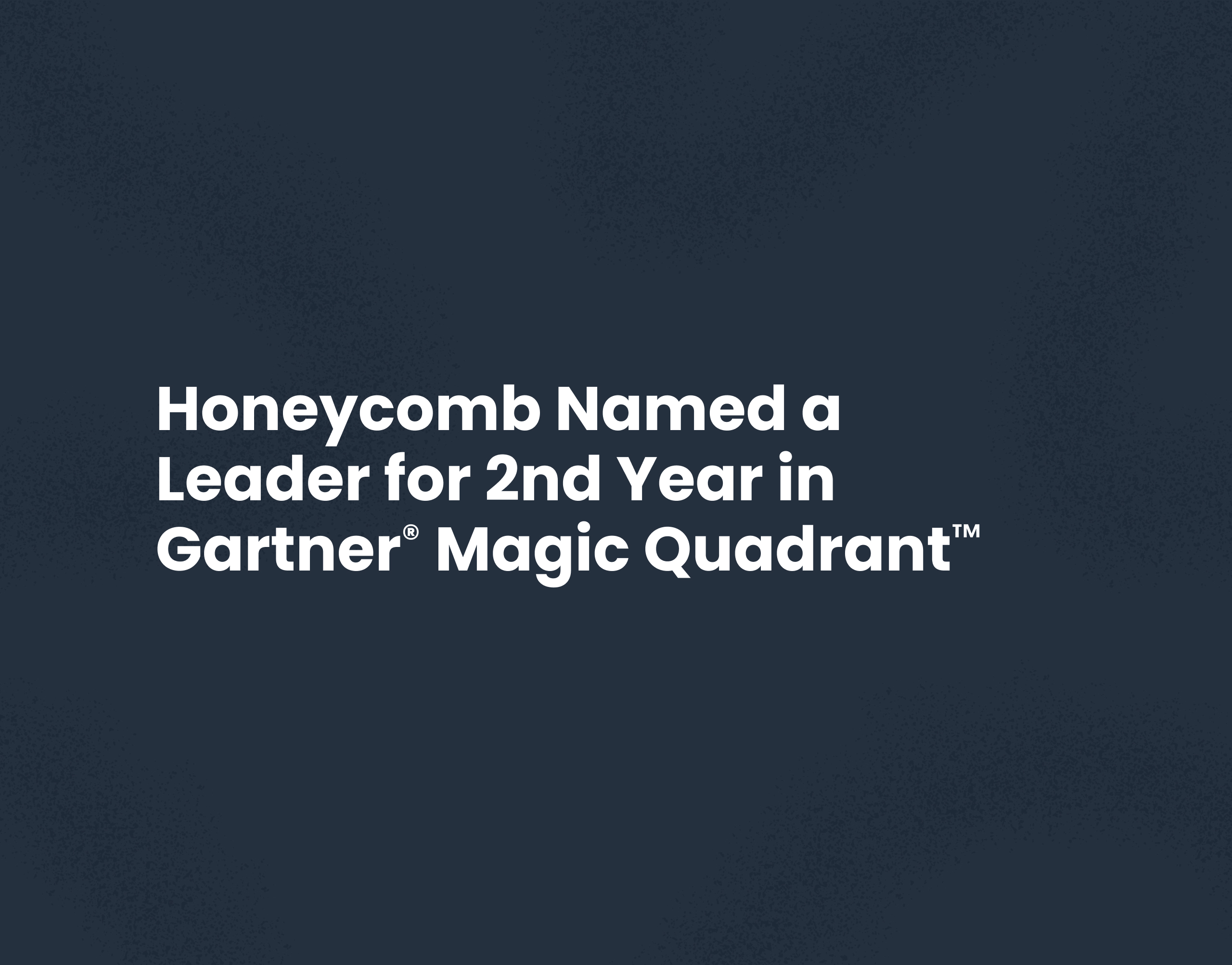Honeycomb ruffled the first of many feathers nearly seven years ago when we coined the term “observability” in talking about production code.
Today, we get to celebrate a major victory in our push for the term to break free from its unsuitable parent category, Application Performance Monitoring (APM). For the first time ever, analyst firm Gartner is highlighting observability in its newly revamped 2022 Magic Quadrant for APM and [now] Observability—representing one big step away from the industry continuing to misrepresent APM as observability (and vice versa).
Better yet: we’ve been named a Leader in this report, validating our seat at the table alongside traditional (and much larger) APM incumbents.
That said, we know the hard work is far from over. Now, more than ever, is the time to continue leading the dialogue around bringing observability to all teams. The explosive growth in its popularity as a buzzword means that incumbents will continue to muddy the waters by slapping an “observability” label onto the same decades-old monitoring, logging, and APM tools they’ve peddled for years.
Observability is fundamentally different from APM
From theory to practice, observability is fundamentally different from the APM approach to monitoring systems and understanding user experiences.
At its core, APM is all about the out-of-the-box experience. Agents promise magical and comprehensive auto-instrumentation; dashboards promise answers, delivered on a silver platter.
But the streamlined, predictable one-framework-to-rule-them-all approach to building software has fragmented beyond any APM vendor’s ability to keep up. Today’s more complex world demands a level of flexibility, explorability, and—yes—ownership that traditional APM vendors’ “easy” button can’t provide.
Observability, in contrast, is centered around an exploratory and interactive workflow. Asking new questions. Making sense of “unknown-unknowns.” Figuring out what matters, in the context of your business. An investigative workflow can begin at a canned dashboard, but must always, always enable the user to step through and customize the questions being asked of their systems.
In the new Magic Quadrant report, Gartner supports this in describing the key difference between observability and traditional APM: “observability-centric solutions support an exploratory, analytics-driven workflow that may bear more resemblance to business intelligence (BI) than IT operations.” They go on to note that observability solutions “identify and predict pathologies quickly enough to resolve them with minimal user impact, alongside access to raw, high-cardinality telemetry and tools to explore and understand it.”
(We dive into “Observability vs APM” much more extensively in our recently released O’Reilly book, Observability Engineering; be sure to download your free copy for more.)
The business and technical benefits for switching from APM to observability
If the only tool you have is a hammer, everything looks like a nail. Alert fatigue and dashboard blindness—among other causes of high MTTRs and burnout—stem directly from trying to apply traditional monitoring approaches to today’s modern systems.
Gartner analysts found the following, from organizations exploring APM and observability tools:
“The term “monitoring” has been in use for several decades in various forms, and, in many organizations, it carries baggage from multiple legacy systems. These were seen as expensive, difficult, and time-consuming to implement and provided limited value to the business. One finance company executive told Gartner, “It feels like we monitor everything, but see nothing.”
Honeycomb’s fresh eyes in this space allow us to dream up—and build for—a vision that feels uniquely relevant to today’s engineering challenges. We aim to bring everyone up to the level of the best debugger. We believe that making that “production intuition” available and familiar to everyone is the best way to build high-performing teams, reduce wasted time and energy, and ultimately deliver better products.
But you don’t have to take our word for it. A recent Total Economic Impact analysis of Honeycomb put concrete numbers behind the ROI our customers have found in switching to Honeycomb—specifically higher revenue and lower costs from reduced downtime and incident prevention, lower tools spend, and reduced developer churn.
A Thank You to our community
Whether you’re already using our product and chatting in our Pollinators Slack community, or simply still learning about the potential of observability, we have each and every one of you to thank. We truly would not be a Magic Quadrant Leader without your support and curiosity in finding a better way to understand your software systems.
Whether we like it or not, observability is for everyone. It’s for everyone because the industry has undergone a phase shift—via containers, orchestration, or serverless—and fostering an attitude of curiosity and exploration across all engineering teams is what enables today’s practitioners to understand and debug issues faster and in more complex systems than ever before.
It’s up to us to help pave the path that brings observability to all teams—and this is the philosophy behind our commitment to our generous free tier. Access to the best tools and techniques can’t be reserved only for those on the cutting edge of tech.
Thank you to our investors for choosing to sidestep safer, traditional bets and shoot for the moon with us instead. And—last but certainly not least—thank you to the Honeycomb team, past and present. You bring your passion, expertise, and willingness to challenge the status quo, every single day. You’re an inspiration to build this future with.
We can’t wait to see what next year brings as we continue to close the gap in the Leaders quadrant to build the best observability solution for all.
Gartner, Magic Quadrant for Application Performance Monitoring and Observability, 07 June 2022, Padraig Byrne | Gregg Siegfried | Mrudula Bangera
Gartner does not endorse any vendor, product or service depicted in its research publications, and does not advise technology users to select only those vendors with the highest ratings or other designation. Gartner research publications consist of the opinions of Gartner’s research organization and should not be construed as statements of fact. Gartner disclaims all warranties, expressed or implied, with respect to this research, including any warranties of merchantability or fitness for a particular purpose. This graphic was published by Gartner, Inc. as part of a larger research document and should be evaluated in the context of the entire document. The Gartner document is available upon request from Honeycomb.
GARTNER and Magic Quadrant are registered trademarks and service marks of Gartner, Inc. and/or its affiliates in the U.S. and internationally and are used herein with permission. All rights reserved.










